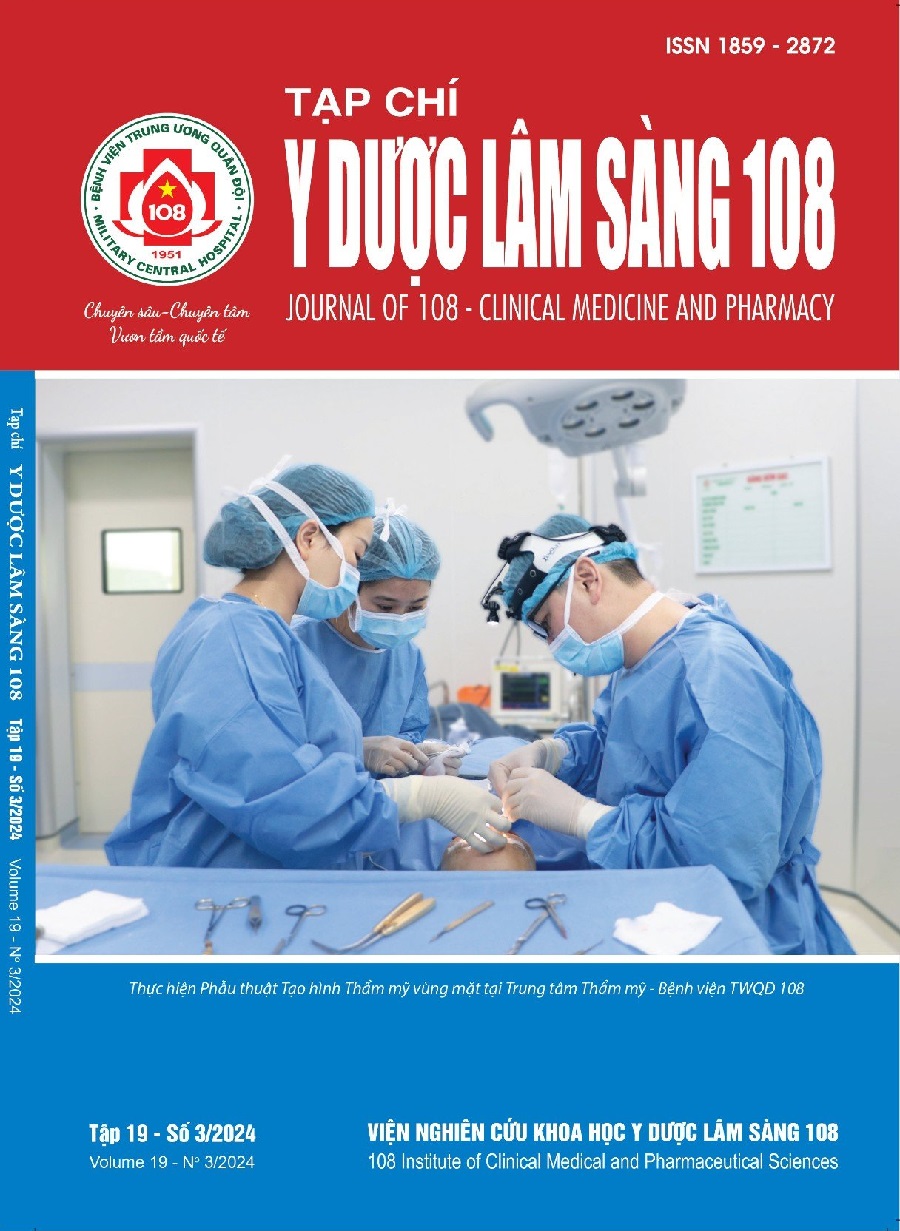Assessment of cardiac and hepatic iron overload by magnetic resonance imaging in patients with thalassemia
Main Article Content
Keywords
Abstract
Objective: To assess hepatic and cardiac iron overload in thalassemia patients by MRI. To assess the correlation of hepatic and cardiac iron overload on MRI with serum ferritin concentration. Subject and method: 566 thalassemia patients from January 2014 to August 2016 with research indicators such as age, gender, hemoglobin, serum ferritin concentration, LIC, MIC, R2 *T2*. Results: Among 566 patients, 16.2% of them were alpha thalassemia, 34.5% were beta thalassemia, 49.3% were betathalassemia/HbE. The average ferritin concentration in the study group was 3108.9 ± 1841.6. Mean T2* for the liver was 1.9 ± 1.4 (ms), mean liver R2* was 670.4 ± 252.1 (Hz) Mean hepatic iron concentration on MRI (mean LIC) was 18.2 ± 7.1 (mg/g), The level of non-cardiac iron overload on MRI was the highest, 474 patients. There were 36 severe patients with T2*< 10ms. The number of patients with cardiac T2*> 20ms is 92 patients, accounting for 16.3%. Ferritin and LIC groups were positively correlated (R = 0.513; p=0.000). Ferritin and T2* were negatively correlated in the moderate group (R = -0.31; p=0.00). LIC and MIC index on MRI have a low-level positive correlation (R = 0.21; p=0.00). Conclusions: Most patients had manifestations of severe hepatic iron overload, 474/566 patients had MRI scans. The above values demonstrate that the group has iron overload in the body was in severe condition. The proportion of young patients with cardiac iron overload is a challenging reality in controlling cardiac iron concentrations to help increase the patient's lifespan. There is a correlation between hepatic and cardiac iron concentration and serum firritin concentration, but serum ferritin does not fully assess the iron concentration deposited in the liver and heart; Therefore, monitoring and assessing the level of hepatic and cardiac iron overload on MRI is very necessary.
Article Details
References
2. Hoàng Thị Hồng, Phạm Quang Vinh (2012) Đánh giá tình trạng ứ sắt của bệnh nhân Thalasemia dựa trên kỹ thuật chụp cộng hưởng từ gan. Tạp chí Y học Việt Nam.
3. Cappellini M, Cohen A, Porter J et al (2014) Guidelines for the management of transfusion dependent Thalassemia.
4. Kirk P, Roughton M, Porter JB et al (2009) Cardiac T2* magnetic resonance for prediction of cardiac complications in thalassemia major. Circulation, 120(20): 1961-1968.
5. Wood JC (2009) History and current impact of cardiac magnetic resonance imaging on the management of iron overload. Circulation 120(20): 1937-1939.
6. Azarkeivan A, Hashemieh M, Akhlaghpoor S et al (2013) Relation between serum ferritin and liver and heart MRI T2* in beta thalassaemia major patients. East Mediterr Health J 19(8): 727-732.
7. Hankins JS, McCarville MB, Loeffler RB et al (2009) R2* magnetic resonance imaging of the liver in patients with iron overload. Blood 113(20): 4853-4855.
8. Nguyễn Hồ Thị Nga, Lê Văn Phước và Bùi Văn Phẩm (2014) Đánh giá tương quan giữa ferritin huyết thanh và tình trạng ứ sắt ở gan, lách và tim trên bệnh nhân Beta - Thalassemia thể nặng bằng kỹ thuật cộng hưởng từ T2*.
9. Eghbali A, Taherahmadi H, Shahbazi M et al (2014). Association between serum ferritin level, cardiac and hepatic T2-star MRI in patients with major beta-thalassemia. Iran J Ped Hematol Oncol 4 (1): 17-21.
 ISSN: 1859 - 2872
ISSN: 1859 - 2872
